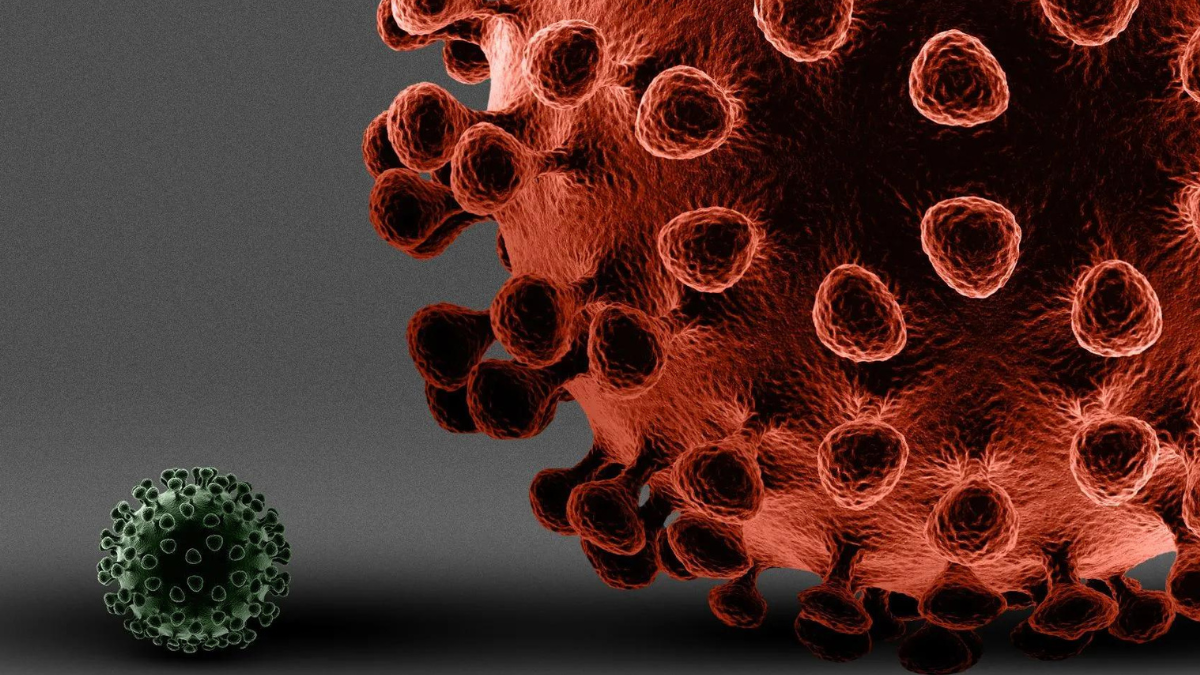The JN.1 strain of the COVID-19 variation has emerged after Omicron and seems to bring about an additional threat by rising cases.
Rising COVID-19 Cases :
The increasing number of COVID-19 cases is a new concern among people. It’s only been a year and a half since the people were out of the hazard of COVID and everything got back to normal, or per se, a new normal.
But the winter season and the rising respiratory infections are also contributing to the red carpet for COVID cases to rise. In India, in the past 24 hours, 702 cases were reported, and along with that, 6 death cases were also recorded.
Add to that, on Wednesday, December 27, a new case of the JN.1 strain of COVID-19 was reported in the capital of the nation.Minister of Health Saurabh Bharadwaj stated that one of the three samples submitted for genome sequencing from is JN.1 and two are Omicron.
Milder incidence rate and Less infectious :
Yet the new strain seems to be a variation of Corona, as a result, it is claimed to have a milder incidence rate and be less infectious than the later strain. Hence, you shouldn’t become frightened.
Right now, knowing the circumstances, their causes, and the precautions that need to be taken beforehand are the only things that need to be kept track of.
In order for one to effectively navigate this changing environment, it is essential that up-to-date information on preventative strategies, key tests, and advice be made available. This is particularly crucial with regard to the JN.1 variation of COVID-19.
As Dr. Vigyan Mishra, chief of lab at Neuberg Diagnostics in Noida, points out, it’s important to remember that information on new variants may change quickly, so being updated through trustworthy sources is significant.
Difference Between the Virus and its Variant :
The World Health Organisation (WHO) considers JN.1 to be a variation of interest with respect to its parent lineage BA.2.86. The key difference between JN.1 and BA.2.86 is found in their spike proteins, which are the portions of the virus that permit intracellular infection.
While they could share many traits, certain variants might differ in particular areas, such as severity, enhanced transmissibility, and vaccine evasion. More research is required to determine these discrepancies.
Promotions of vaccination, public health initiatives, and research endeavors are required to lessen the impact of recently emerging variations like JN.1 and to maintain an advantage over COVID-19.
Tests that are important :
PCR and antigen testing are frequently utilized in the diagnosis of active infections related to infectious disorders such as COVID-19. In various phases of illness diagnosis, monitoring, and research, each of these methods is essential.
Polymerase Chain Reaction (PCR) test
A molecular biology method called PCR testing is used to amplify and examine DNA in order to find certain genetic material, such as pathogen DNA. A reaction mixture including primers, DNA, and the enzyme DNA polymerase is heated and cooled during the process.
Through this technique, a particular DNA fragment is amplified, which facilitates detection and analysis. Numerous applications for PCR include genetic testing, forensic analysis, diagnostic testing, and research.
Antigen testing
Antigen testing, which is frequently used to diagnose current infections, is a technique for identifying certain proteins on the surface of pathogens, such as viruses.
It entails taking a sample and combining it with an antigen-detecting solution. Rapid diagnostics with antigen testing are popular, especially for infectious disorders such respiratory viruses like influenza and SARS-CoV-2.
Genomic sequencing
Genomic sequencing is a technique that provides a thorough comprehension of genetic information by determining an organism’s whole DNA sequence or a specific section of its genome.
High-throughput DNA sequence analysis is made possible by contemporary techniques like next-generation sequencing (NGS), which opens up new avenues for research on genetic diversity, pathogen origins, genetic mutation identification, and personalized treatment.
COVID-19 precautions :
- Vaccination: To avoid serious disease, hospitalization, and death, get vaccinated as soon as you are eligible.
- Mask Wearing: When social separation is difficult, use masks in public areas.
- Hand Hygiene: Consistently wash your hands for at least 20 seconds with soap and water.
- Social Distancing: Keep a safe distance from people who aren’t related to you.
- Reduce Large Gatherings: Stay away from crowded places.
- Ventilation: Open doors and windows to promote healthy indoor air quality.
- Symptom Monitoring: If you’re feeling ill or have symptoms, stay at home.
- Travel Precautions: Adhere to quarantine and travel restrictions.
- Isolation and quarantine: If exposed or tested positive, adhere to protocols.



